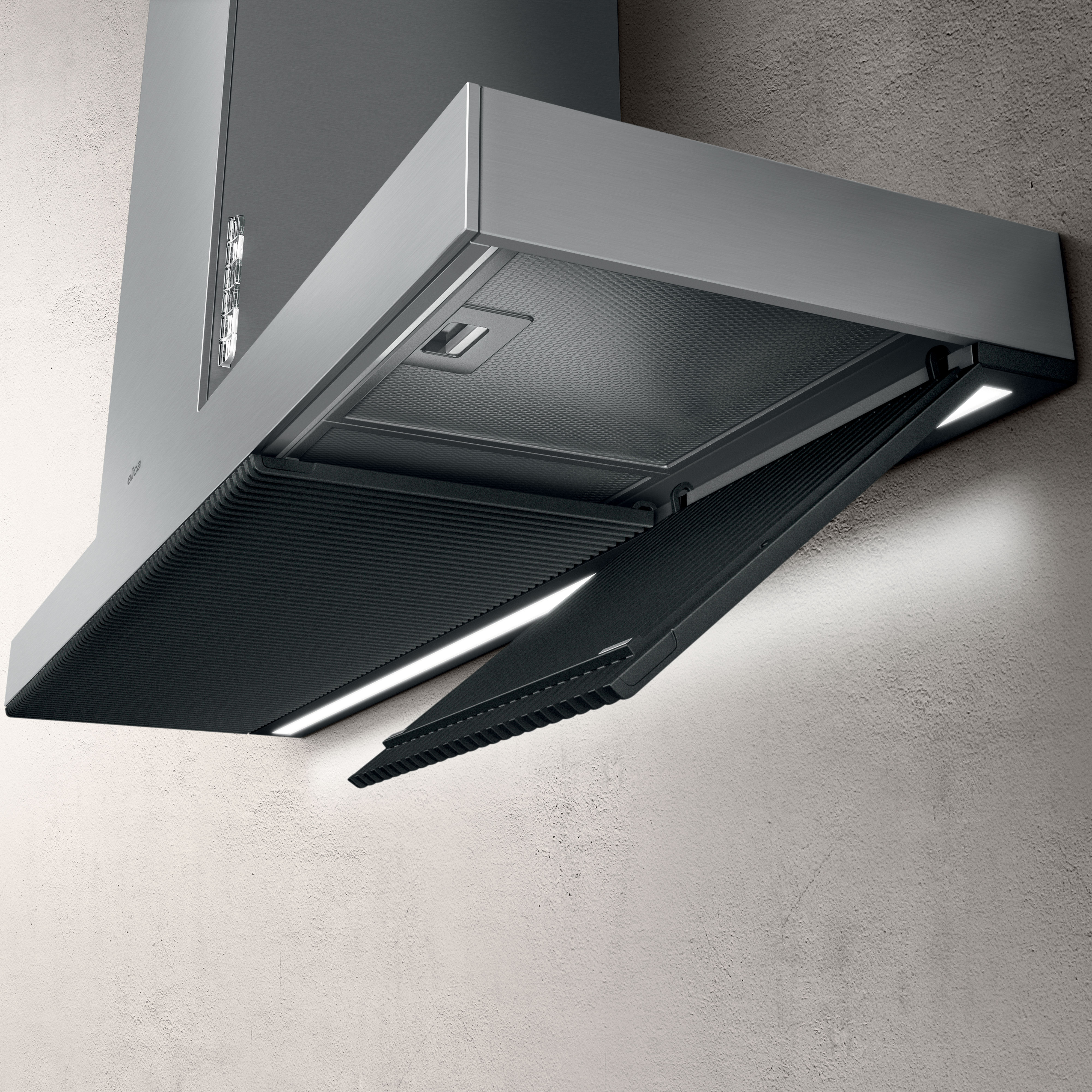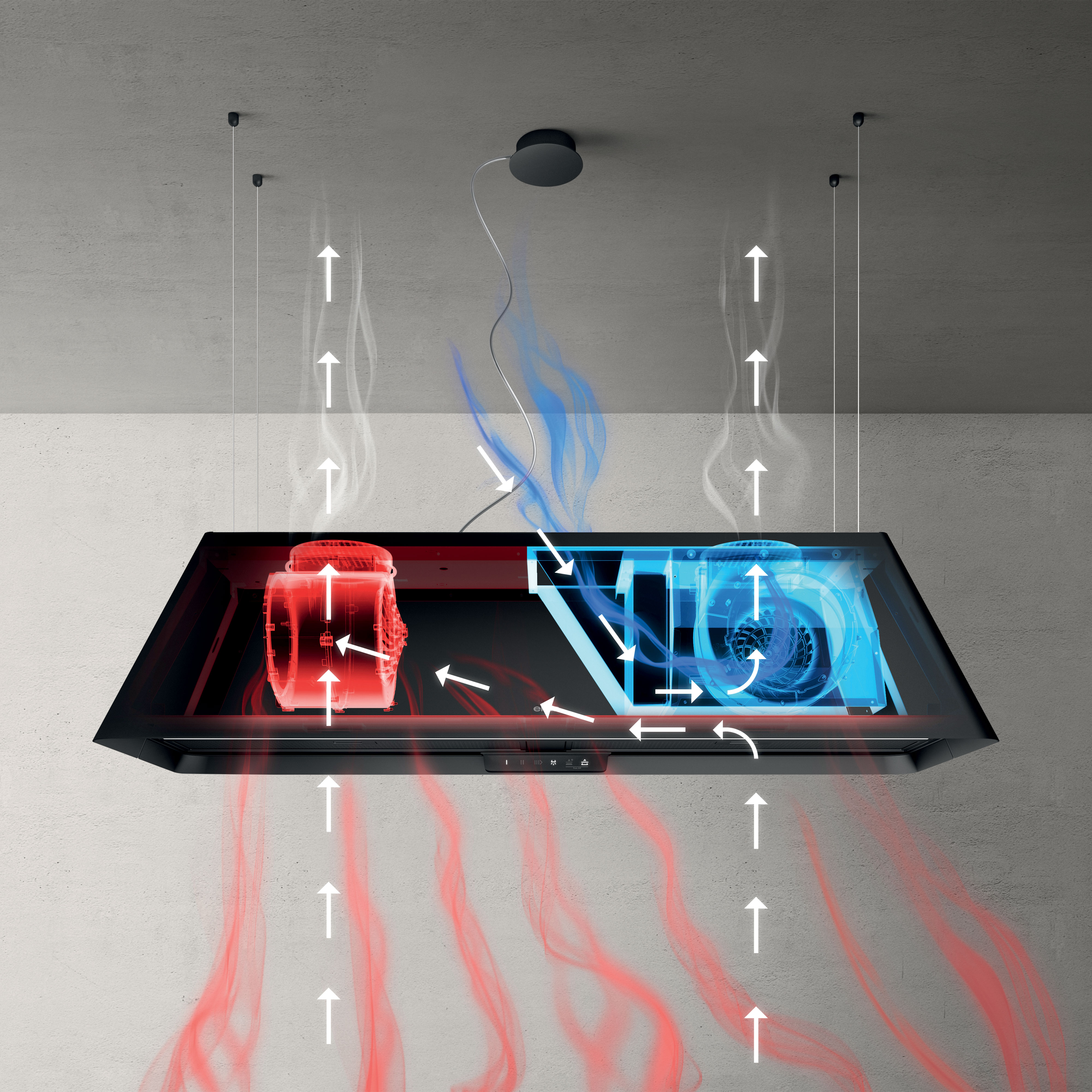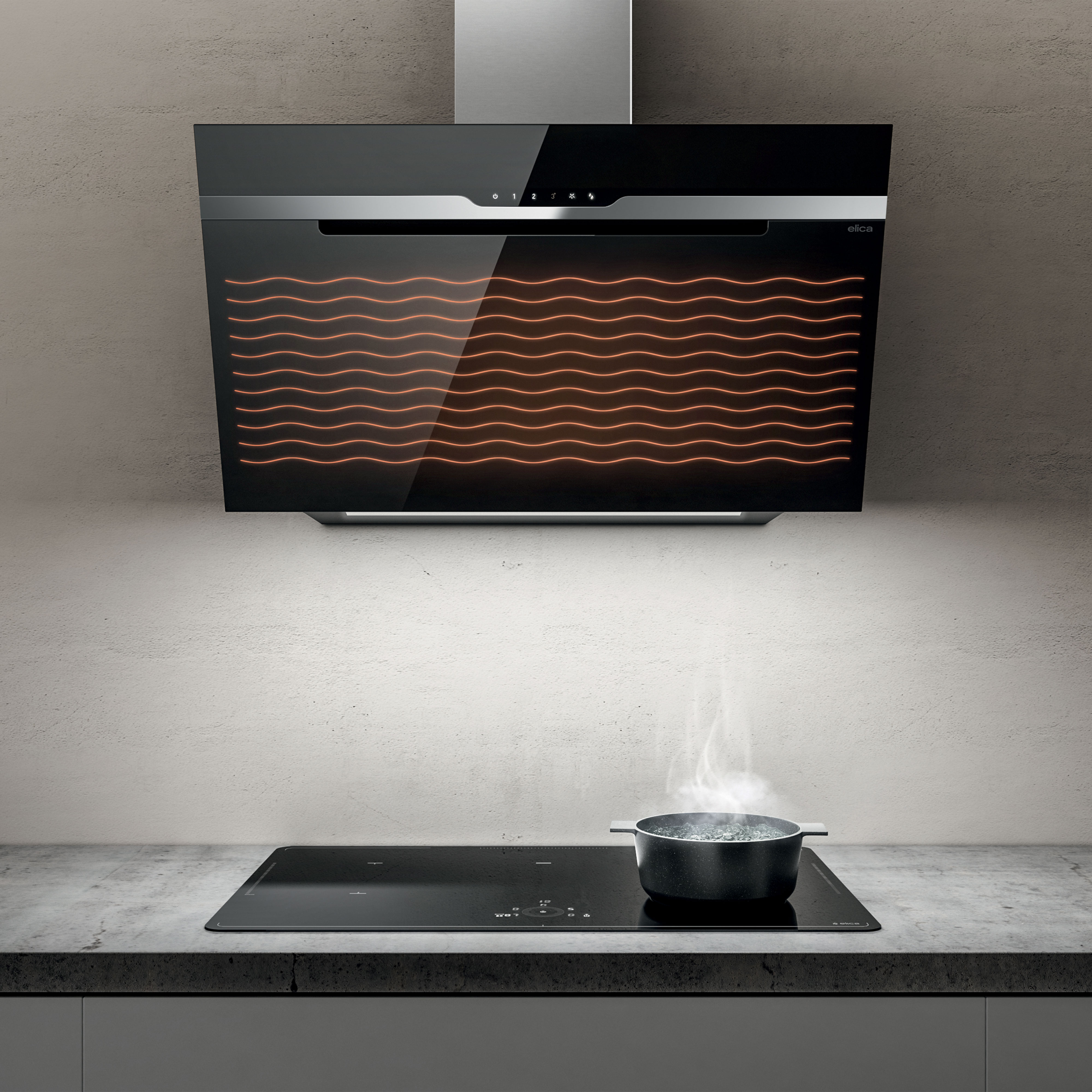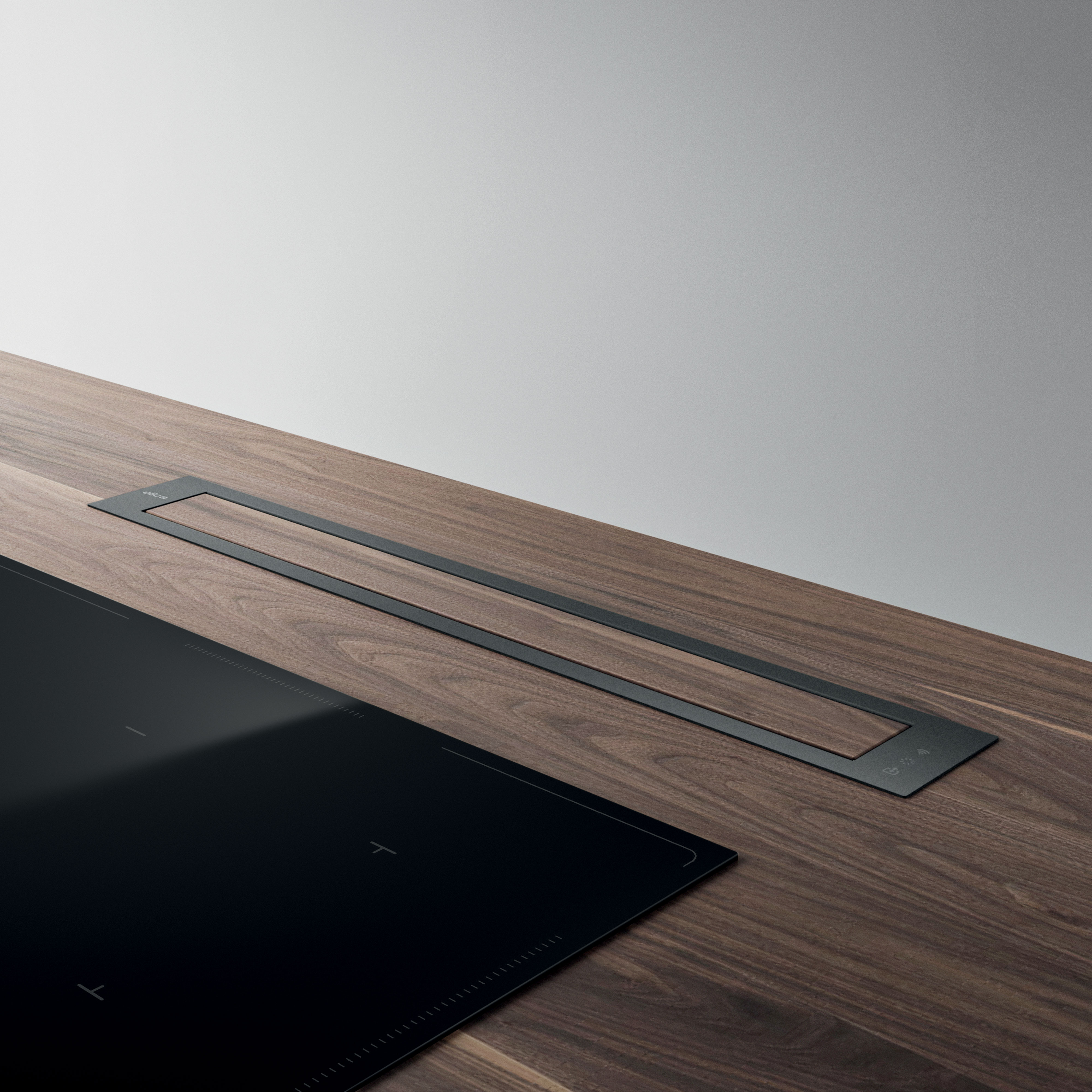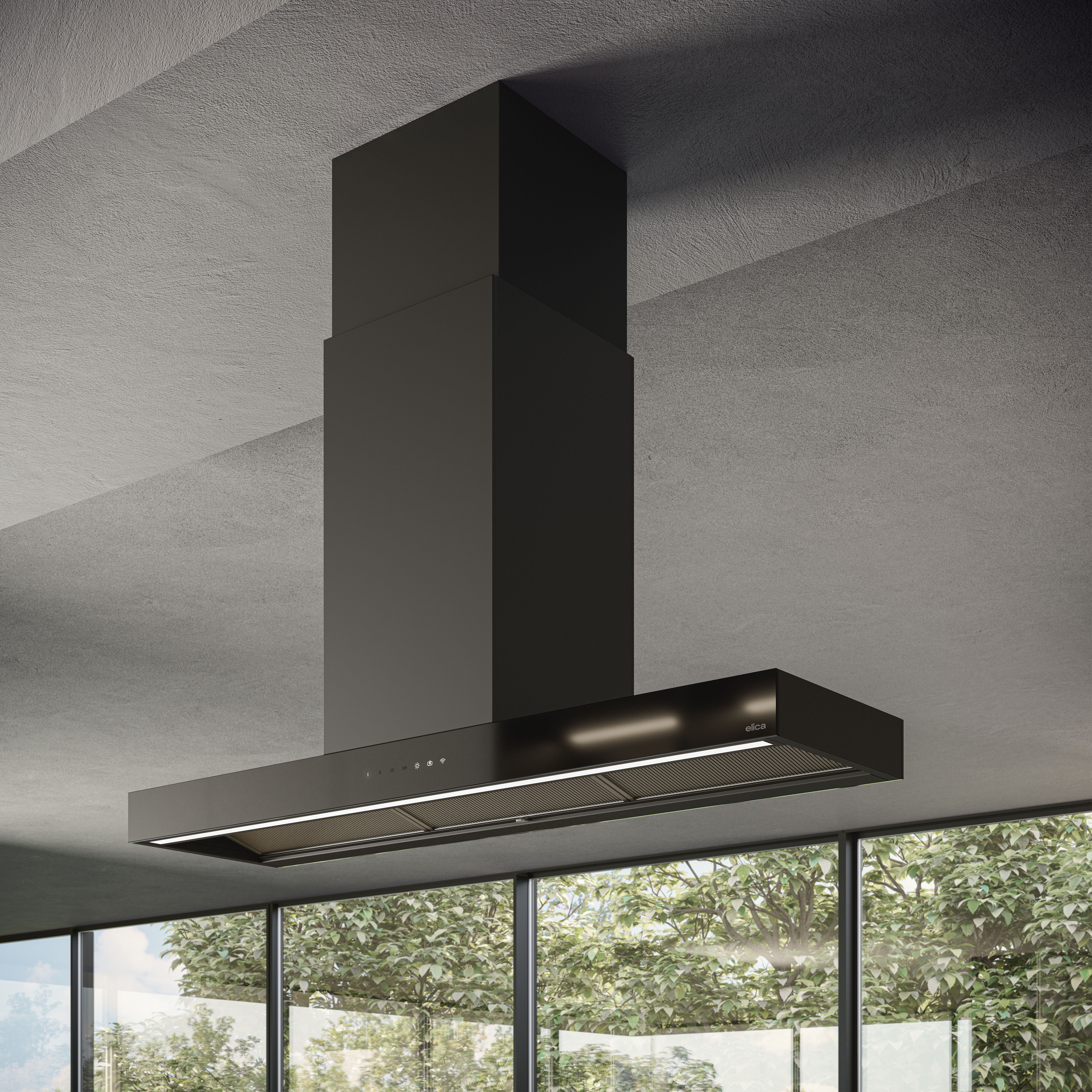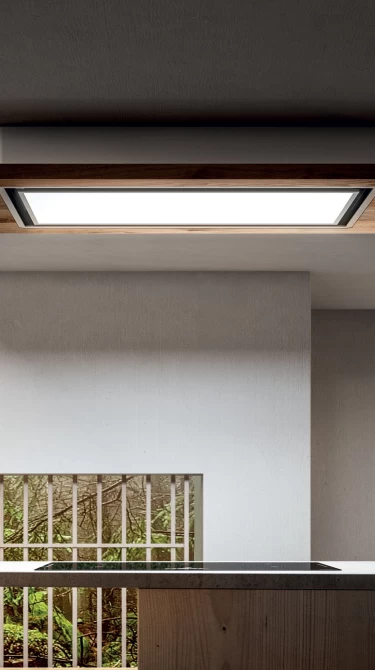
The cooker hood has become a must-have appliance in every kitchen, especially for those who love cooking at home. In fact, a cooker hood is a valuable ally for removing cooking fumes, vapours, and odours while maintaining optimal air quality.
Cooker hoods are available in duct-out or filtering models. But which one is better? And which should you choose for your kitchen?
Duct-out or filtering hood: before you decide
There are several factors to consider before choosing a cooker hood:
-
the cooker hood must be wider and deeper than the hob
-
noise levels, especially when operating on the highest power setting
-
energy consumption: energy class A, A+, and A++ models are more energy efficient and cause less pollution
-
filters: Elica filters, for example, are regenerable and can last up to 5 years (they need to be replaced less frequently and have a lower environmental impact)
Duct-out hoods: what they do and how they work
These types of hoods are designed to extract cooking fumes, odours, and vapours from the kitchen. A fan draws in air, which then passes through odour, grease, and moisture filters before being expelled outside. This keeps the kitchen air fresh, clean, and healthy.
Duct-out hoods require a dedicated duct system that is separate from all other exhaust systems (e.g. chimneys, heaters or furnaces). They must be installed by qualified service technicians.
Filtering hoods: what they do and how they work
This type of cooker hood does not require ductwork, as it does not vent air outside. Instead, a fan draws in air, which passes through filters inside the hood, removing fumes, odours, grease, and impurities. The filtered air is then recirculated back into the kitchen.
One advantage of this type of cooker hood is that it is easier to install. However, current regulations require these appliances to be used in a kitchen with an external vent, hole, or other ventilation system to ensure a constant airflow.
Duct-out or filtering hood: a comparison
Here’s a quick breakdown of the main pros and cons of these two types of cooker hoods.
Pros: higher air-exchange, operates without additional holes or ventilation systems, long-life regenerable filters.
Cons: requires a duct system and must be installed by qualified technicians.
Pros: no ductwork required, easier to install, uses latest generation, long life, regenerable odour, grease, and moisture filters
Cons: requires holes or auxiliary ventilation systems, recirculates the same air back into the kitchen, lower airflow
Duct-out or filtering hood: models
Duct-out hoods come in a wider variety of models than filtering hoods, but there are plenty of solutions on the market to suit your needs in terms of aesthetics, space, and functionality. Cooker hoods are available:
-
in various configurations: wall-mounted, built-in, island, chandelier-style, downdraft, suspended, modular
-
with designs ranging from classic and traditional to sleek and modern
-
in both larger and more compact sizes
-
with or without Bluetooth connectivity, allowing them to be operated remotely or via a voice assistant
Duct-out or filtering hood: final thoughts
The choice between a duct-out and a filtering hood mainly depends on whether your kitchen has a duct system and how much of a priority ventilation and optimal air quality are for you.
Elica, a world leader in extraction systems, offers a wide range of models with innovative features, exceptional performance, and outstanding energy efficiency, all while reducing environmental impact.
